Jean Grey To The Dark Phoenix: Marvel’s Powerful Mutant Turned Trope
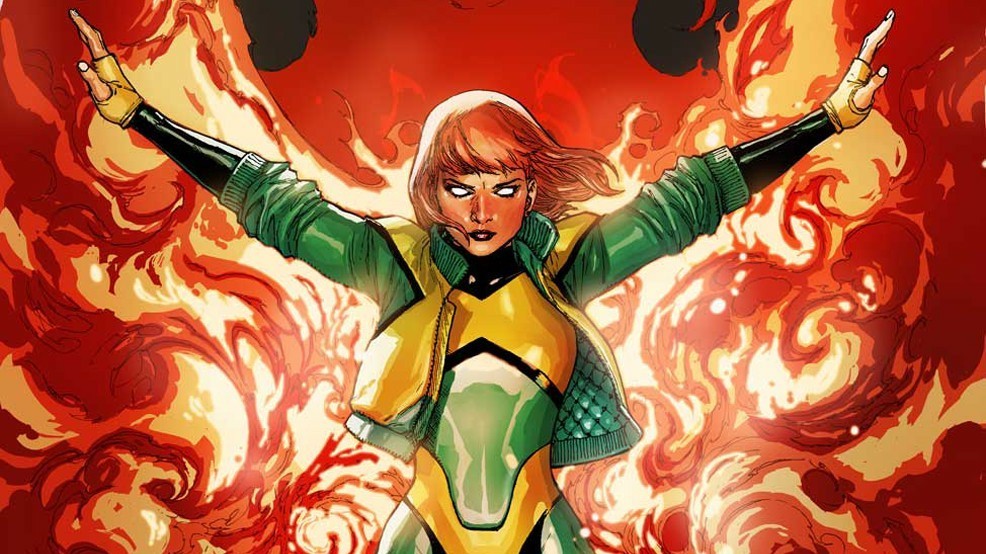
Join the community on Reddit for the latest Marvel & DC news!
- God Loves, Man Kills
- Mutant Massacre
- Days of Future Past
- E Is For Extinction
- Mutant Genesis
- Age of Apocalypse
- Gifted
- Messiah Complex
- Dark Phoenix Saga
Although it took more than 10 years to finally “make it”, the X-Men are one of Marvel Comics most profitable properties. Not only do they boast some of the greatest heroes and villains in comic book history, but the X-Men also have some of the greatest stories. If you haven’t read them, you should probably start.
At the center of their success lies an easy recipe. Create relatable characters with relatable problems. If this sounds overly simple, it’s because it is. The X-Men work because those who read them have, at one point or another, experienced the same things that they have experienced. Of course, I don’t mean a genetic mutation that grants superpowers. No, I mean an event or circumstance that makes a person question what’s going on around them.
The X-Men have built themselves around challenging real-world issues. Discrimination. Bigotry. Racism. Sexism. Hate. Religion. After all, the premise of the X-Men is that they are people, who during their teenage years, learn that they have a genetic mutation in their D.N.A. which will grant them extraordinary abilities. Even though many would dream for any one of the abilities the X-Men possess, their uniqueness causes them heartache.
And why?
As Star Wars so brilliantly told us, it makes those around them fear them…and fear leads to anger, anger leads to hate, and hate leads to suffering. Because of the underlying themes in their comics, I’d be hard-pressed not to say that the X-Men are one of the most proactive voices in the comic book community.
The X-Men famously first appeared in September of 1963. That issue introduced six heroes and one villain that are as important today as they were then.
This group of seven characters has shaped the landscape of comic books like no other. Certainly there’s an argument to be made that the Justice League, Fantastic Four, and Avengers have all played an integral role in the popularity of team-based comics. However, none of them have moved mountains socially like the X-Men have. The small list of the above stories above clearly demonstrates this.
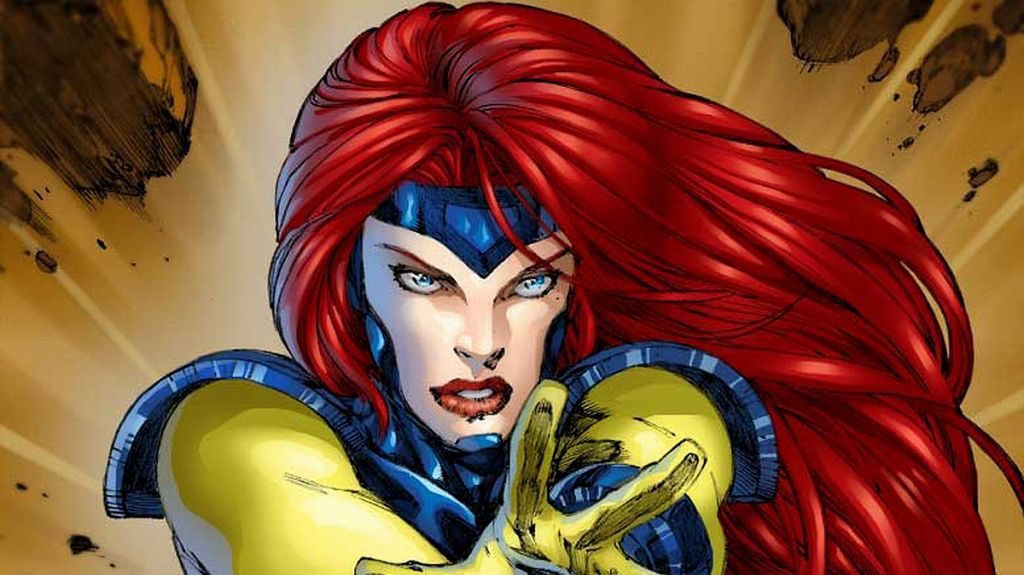
Let’s take God Loves, Man Kills as an example.
God Loves, Man Kills saw the X-Men deal with a threat that couldn’t be foiled with superpowers. Instead, this threat (Reverend William Stryker), was foiled with words. William Stryker was a televangelist who saw mutants as a problem that needed extermination. He used his fortune and work as a “Man of God” to convince those around him that mutants were atrocities in the eyes of God. Once he achieved this, he kidnapped Charles Xavier and used his mutation to locate every mutant on the planet. The idea was that once located, Xavier was to cause every living mutant to hemorrhage at the brain. Realizing they couldn’t defeat him through force, Cyclops delivered one of the greatest and most heartfelt speeches in the history of comics.
“Says who? You? What makes your link with Heaven any stronger than mine? We have unique gifts – – but no more so, and more special than those granted a physician or physicist, or philosopher, or athlete. It could be due to an accident of nature or divine providence, who’s to say? Are arbitrary labels more important than the way we live our lives, what we’re supposed to be more important than what we actually are?!”
God Loves, Man Kills challenged everything the world knew about religion. It forced its reader to step back and analyze their very thoughts.
Even though God Loves, Man Kills is a book written by Chris Claremont, it isn’t his most well-known work. The honor belongs to the Dark Phoenix Saga. Aside from cementing Claremont’s legacy as the greatest X-Men writer in history, the Dark Phoenix Saga changed everything we ever knew about the X-Men…and at its heart was Jean Grey.
The history of Jean Grey begins inside the pages of X-Men #1 in September of 1963. She was created by the legendary duo of Jack Kirby and Stan Lee. Like all of the other characters introduced in that book, Jean Grey is a mutant. As defined by Wikipedia, a mutant is “a human being that possesses a genetic trait called the X-gene. It causes the mutant to develop superhuman powers that manifest at puberty.”
As a mutant, Jean is one of the most respected and fear characters in the Marvel Universe. Her power set grants her telepathy, mind reading, telekinesis, and the ability to create telekinetic weapons. Jean Grey is also a powerful empath. As an empath, she can feel the pain of others and causes others to feel the pain they’ve inflicted. Like most mutants, Jean wasn’t born with her powers. Instead, they appeared later in life.
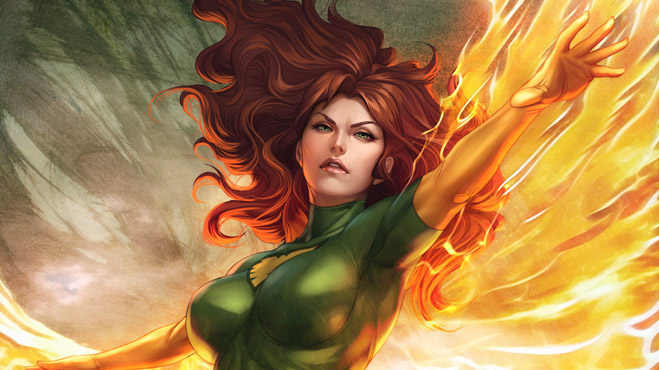
Jean grew up in a fairly normal environment. Her father, John was a history professor and her mother, Elaine a proud mother of five. Although they couldn’t have known it, at the time of her birth, Jean was just ten years away from attracting the attention of a powerful cosmic entity.
Let me explain.
Jean’s powers manifested unusually early in her life. They appeared after her childhood best friend was involved in a fatal car accident. This moment of stress triggered her power of telepathy to reach out and comfort her dying friend. As a consequence, Jean felt and experienced everything that her friend felt and experienced. That is, as a child of just ten years Jean experienced what it was like to die. Because she was ill-equipped to handle the stress, this event caused her to repeatedly harm herself. Concerned for their daughter, her parents began to spend a countless amount of money on counseling and other therapies. Unfortunately, nobody was able to get through to her…or at least nobody not named Charles Xavier. Like Jean, Xavier was a powerful telepath. With his telepathy, he entered her mind and began to comfort her.
Confident that she could control her power, Xavier took Jean to the mall. He did this as a way to test her ability to block out the thoughts of those around her. Unfortunately, she couldn’t do it. Instead of blocking them out, her powers erupted in an extremely harmful way. Taken back by what he witnessed, Xavier worked to prevent this from ever happening again. To do this, he once again entered her mind. Rather than working to ease her pain, he began to put up mental blocks that would shut off portions of her power.
Even though he knew of her power potential, when Xavier assembled the X-Men, he frustratingly treated her like the women of the era. The most famous example of this happened in X-Men #3.
In 1963, the X-Men was a group of superpowered teenagers under the tutelage a middle-aged man. The teacher and student trope is one that can only play out in one of three ways. First, the student can excel under the teacher’s guidance. Second, the student can struggle under the teacher’s guidance. Third, the teacher can show an interest in the student leading to an exchange only found in a bad pornography movie. To the detriment of Jean Grey, the corny music and cheap stage props appeared and the pornography movie was about to begin.
Professor X: “Be careful, my dear! I cannot tell what powers this mutant may possess! He may be a danger to you!”
Jean Grey: “Don’t worry, sir! Remember how well you’ve trained us.”
Professor X: “Don’t worry”! As though I could help worrying about the one I love. But I can never tell her! I have no right! Not while I’m the leader of the X-Men, and confined to this wheelchair!”
Professor X has done a lot of things right in his time. He’s founded a school where mutants can learn to understand their powers. He’s fought for human and mutant peace for most of his life. And he’s personally helped some of the most important mutants ever created. All in all, he’s just about as stand up and respected as a person can be.
At no point in this exchange did Professor Xavier show concern to the other members of the team. Not Cyclops, Beast, Angel, or Iceman. None of them. By all metrics, Jean was the most prepared for the battle, and yet she was the one Xavier reached out to. I know what you’re thinking. You’re thinking that as his first recruit, Cyclops was the most prepared. I disagree. Remember, he’d been working with Jean for nearly a decade by the time this happened. After the mall incident, Xavier knew exactly who she was and what she was capable of.
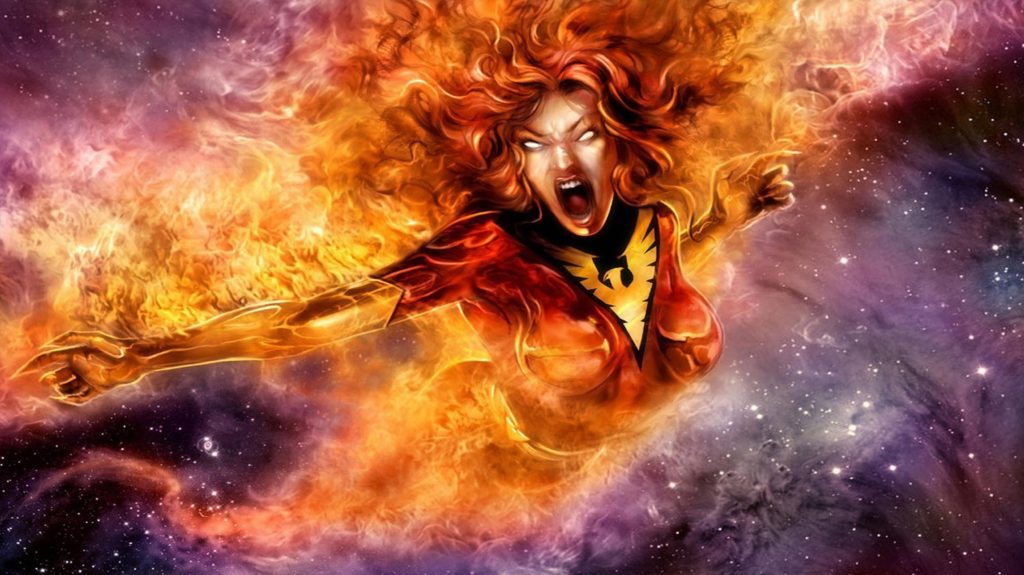
So why the creepy exchange? Why does a middle-aged man need to show any sort of attraction to a girl 20 years his junior?
The answer is surprisingly simple. Jean Grey was created in the 1960s and 1960s women were viewed very differently than they are today.
Although we now know her as the most powerful of the X-Men, in the 1960s women weren’t supposed to be more powerful than men. Women weren’t meant to be able to instantly end any battle they were apart of. And women were typically meant for only one thing…to push the storyline for their male counterparts. Look no further than her relationship with Scott Summers to see what I’m talking about.
Throughout the entire history of Jean Grey, she was used as a catalyst for the development of Scott Summers. She’d find herself in trouble and Scott would rescue her. She’d struggle with life and Scott would comfort her. And she’d…well, you get the picture. This wasn’t only limited to the 1960s either. Even the X-Men Animated Series of the 1990s made her push Scott’s development. To this day I still have nightmares with Scott screaming “Jean!!!” every time she wound up in trouble.
The 1960s led into the 1970s and the 1970s led into the aforementioned Chris Claremont.
Thanks to the brilliant work of Chris Claremont, the Phoenix Force will forever be associated with the X-Men. Claremont introduced the idea of the Phoenix Force in X-Men #101 back in October of 1976. The issue saw the team returning home from a mission in space with Jean at the helm of the shuttle. As they traveled through space, they encountered some radiation. Feeling that the team was in danger from the radiation, Jean used her power to create a shield. Unfortunately, the radiation caused the shuttle problems and she was forced to crash land at JFK Airport. This, however, didn’t happen and she instead crash-landed into the nearby Jamaica Bay. As a result of the impromptu landing, when the shuttle hit the water, it broke into thousands of pieces.
Thanks in large part to Jean’s heroics, the X-Men made it safely to the ground. Sadly, the same could not be said about Jean. Try as they may, each were unable to find their fallen teammate. That is, until she emerged from the water screaming “Hear me, X-Men! No longer am I the woman you knew! I am fire! And life incarnate! Now and forever — I am PHOENIX!”
If there was ever a seminal moment in the history of Jean Grey, this was it. When Jean appeared out of the water screaming that she was Phoenix, it ushered in an existence that nobody had seen before…an existence built around life and death. When Jean plunged into the water, she appeared to have died. When she reappeared moments later as Phoenix, she was, in effect, reborn just as the mythological Phoenix is. Remember, Marvel’s Phoenix isn’t that much different from the firebird of stories. Its sole purpose is to burn away what doesn’t matter, to give way to what does. It found Jean at a young age, patiently waited for the right moment to arrive, burnt away what didn’t matter, and gave way to what did.
For reference, the Phoenix Force is an ultimate power within the Marvel Universe. It’s both without change and immortal and is born of the void between states of beings. It’s the center point of all Psionic Energy that has existed, does exist, and will ever exist.
Of all the beings in the Marvel Multiverse, the Phoenix entity if one of the most feared. This is because it possesses the power to maim, dismember, harm, and destroy any part of the universe. More impressively, once it does any of these, it can repair and mend that part of the universe to how it was before it attacked. Marvel has described the Phoenix Force as “the embodiment of the very passion of Creation—the spark that gave life to the Universe, the flame that will ultimately consume it.”
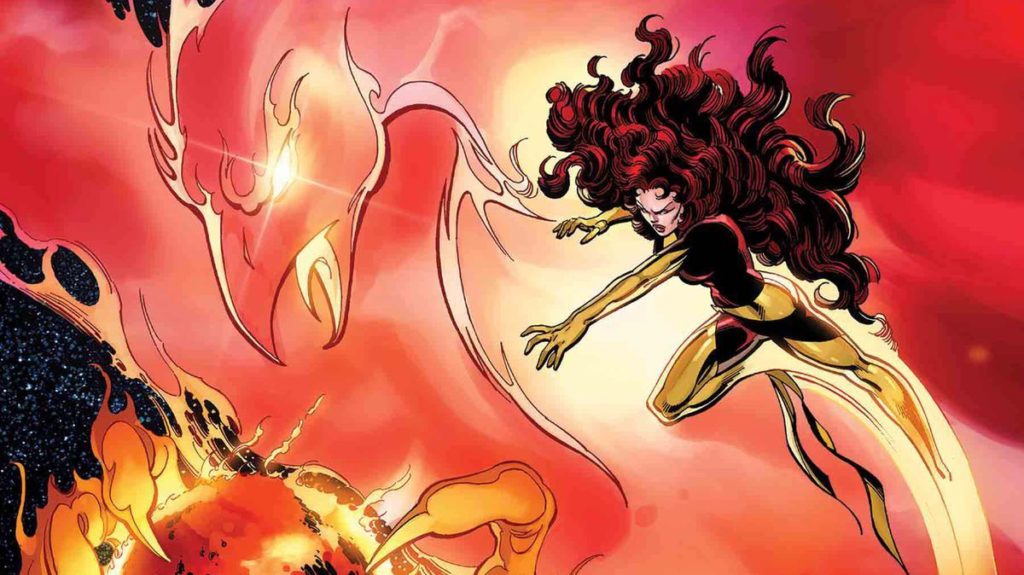
As you probably assume, as the Phoenix, Jean Grey’s powers grew in unimaginable ways. The book “Women of Marvel: Celebrating Seven Decades Handbook” describes it like this.
“While empowered by the Phoenix Force, Grey has total telekinetic control of matter at the molecular level, allowing her to manipulate atomic structures on a universal scale. She can generate any form of energy in seemingly unlimited amounts, as well as absorb energy from sources as great as a supernova or even convert her physical form to pure energy and back again. She can also exist in virtually any environment without harm and create space/time warps to travel through hyperspace or traverse the timestream, and her telepathic abilities are also vastly enhanced. When using her power, the Phoenix Force will manifest itself around Grey in the form of a bird of cosmic flames, the size of the bird varying with the amount of energy she is using. [These flames can even manifest in seemingly impossible situations, such as the vacuum of space or underwater. This fire apparently does not require oxygen to burn, and burns so intensely that matter is consumed without by-products such as ash. The cosmic fire is a literal punctuation to the Phoenix’s purpose to “burn away what doesn’t work”, as well as being described as “burning through lies and deception”.] The Phoenix Force can also resurrect the dead under some conditions, and absorb the life force from other sentient beings to bolster its own.”
The Phoenix did what Jean couldn’t do and Professor X tried to prevent. It A) unlocked her true potential and B) set her on a path of eternal life and death.
Let me explain.
The death of her childhood friend affected the history of Jean Grey in two very important ways. First, it caused her to experience death in a way that no child should have to. And second, because the Phoenix Force craves death, it acted as an eternal mating call to it.
By the 1970s, Jean Grey had experienced more life and death (personal and impersonal) than any character in comics. From this moment forward, the history of Jean Grey was to be built around the life and death trope.
X-Men #134 has one of the most famous comic covers of all time…and for good reason. The cover sees a defeated X-Men team lying on the ground as a possessed Jean Grey flies over the top of them. What makes this cover so iconic is that Jean holds the X-Men logo in her hands. This image clearly indicates that she has now become larger than the team.
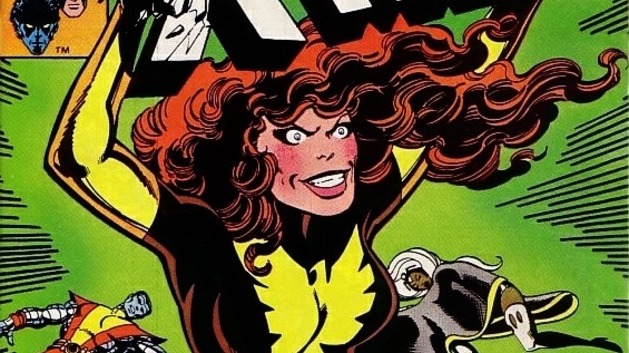
I won’t get into the happenings of the Dark Phoenix Saga (X-Men issues 129-138). This is mainly because it’s been beaten to death by various movies and you probably know it better than I do. I will, however, say that the story saw the transformation of the Phoenix into the Dark Phoenix. And the Dark Phoenix was a being capable of causing planet-wide genocide.
Many could argue (I’m not one of them) that Jean’s death and rebirth as the Phoenix didn’t do enough to tie her to the life and death trope. After all, a single death and rebirth might not be enough evidence to define someone by. Her “death” and rebirth as the Dark Phoenix, however, should be enough to sway even the greatest doubters.
Just think about it.
After 37 short issues, Jean had once again died (metaphorically) and been born again.
More than fuel the life and death trope, by making The Dark Phoenix and by association, Jean Grey the most powerful being in the Marvel Universe, Claremont had found a way to erase decades of terrible character development. No longer was she the token female/damsel in distress on a team filled with men. She was power defined.
And then it was taken away.
Several years after the conclusion of the Dark Phoenix Saga, the history of Jean Grey was retconned (rewritten) to have never actually bonded with the Phoenix Force. Instead, it was revealed that Jean had spent the last many years inside a cocoon at the bottom of Jamaica Bay. Within a very short series of panels, every bit of character development Jean Grey went through was tragically stripped away.
Life and death.
Once again, the character of Jean Grey was metaphorically killed, and in her place stood a character designed to fuel two recurring tropes.
- Life and death
- An object of lust for male characters
What’s interesting is that while all this was occurring, Jean herself was becoming a trope. That’s the tragedy of the character. Not that she’s constantly dying and being reborn. Not that she’s in a perpetual state of uncertainty. And not that her importance is often downplayed. Her tragedy is that with everything she’s been through, Jean Grey has morphed into that which she’s tried so desperately to get away from…a trope. That is, Jean has died and been reborn so many times that when the topic of life and death in comics comes up, her name is unavoidable.
I’m not too sure how I feel about that. On one hand, she has become one of the most recognizable X-Men of all time. On the other, she did it by continually downplaying how important and powerful she was. No matter my opinion, therein lies the beauty of comic books. Each and every time they’re read, they always find a way to leave the reader with more questions than when they picked up the book.
As I do with all of these in-depth articles, I’m going to leave you with this.
Comic books are the gateway to understanding the world just a little bit better. So, may they be around forever.
What do you think? Is the history of the Dark Phoenix a fair one? Do you believe that the history of The Dark Phoenix could’ve been written in a better way?
Liked this article? Join the community on Reddit for the latest Marvel & DC news!

